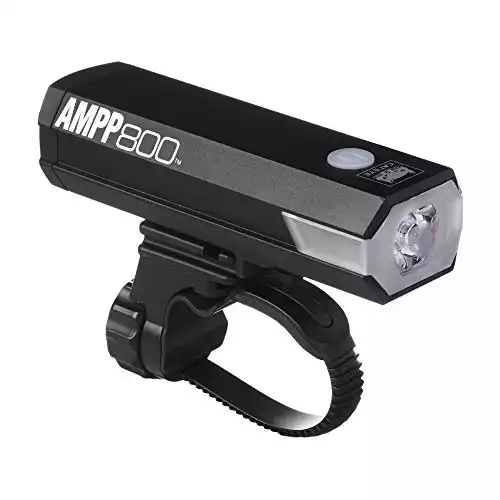Cycling is often thought of as being suited for sunny afternoons. But what if I want to ride throughout the year in all types of weather? What do I need to know to prepare for this? Winter is the toughest season to cycle in as you need to prepare for the cold, perhaps snow and ice, plus salt on the roads, and it is generally darker and wetter.
Don’t be put off, though; cycling in the winter is common, enjoyable, and can be extremely comfortable, such as this example in Finland. Of course, it is worth preparing in advance, as the saying goes “there is no such thing as bad weather, only unsuitable clothing”.
Winter cycling clothing: warm and dry – but not get too sweaty
The first aspect to consider is to keep your extremities warm as a necessity – you don’t want your fingers or toes or ears getting frozen! Next, keep direct wind from hitting your body and head, which can normally be done with the waterproof layer, too, meaning we can get two birds with one stone there.
Of course, you need warm clothing, but not too warm. Remember, you will be cycling, so your body will generate heat, and if you start to sweat too much, the sweat will evaporate and make you colder or it will even freeze, both of which are not great. Of course, breathable fabrics also help the sweat evaporate more quickly too.
Electric bikes built for everything and priced for everyone. Shop Rad Power Bikes, America's #1 electric bike brand. Get out. Go further. Ride Rad.

Guidelines for winter cycling clothing
Generally, these clothing items can be found widely in bike stores, department stores, outdoor stores, or online. Of course, look around as different places have products with different pros and cons.
Also, check the reflective features on the clothing. As you’ll be cycling in dark conditions, the more visible you are, the safer you are.
Gloves
Waterproof and insulated cycling gloves often have a temperature rating, so try to find a pair that best suits your local conditions. Also, make sure they feel comfortable, that you can actuate all your control levers properly, and that there are good rubber traction dots.
For gloves especially, it can pay to visit a store and try some different types on as there are many glove options and many different hand types.
Shoes
Wet conditions – It is tough to keep your feet dry in wet conditions, and you have two main options, which are;

Use hiking boots – they are generally waterproof, warm, durable, and have good traction
If you use clip-less pedals and shoes or don’t want to wear hiking boots, then you can use shoe covers. I personally have never found a good option for shoe covers, as eventually they seem to leak and then your foot is just in a pool of water…
Snow and Ice – Here, hiking boots are the preferred solution as they keep your feet warmer, although some people prefer clip-less pedals and will simply use them anyway. That’s fine, and you have a pair of socks and shoes, so usually that is enough.
Also, a great tip is to add removable ice cleats to your shoes if they don’t have them already. When riding on ice with ice tires, you may forget that it is so slippery, and then when you put your foot down, whooshhhh, and you fall on your head… ice cleats can help stop this.

Jacket
Ise a waterproof “shell” jacket with a hood. A thin, waterproof, and breathable jacket is ideal. Make sure it fits well with your gloves and that it is not too bulky, especially if you carry a bag over your shoulders too. If you are concerned about being cold, wear an underlayer such as a sweater or extra t-shirt that can be removed if you do get too warm or sweaty.
Bags
An important point is to have a waterproof bag or pannier with a folding closure like the Ortlieb panniers, which are pretty much the gold standard for waterproof panniers and can be picked up on Amazon. Of course, you have fewer pockets due to the single outer plastic design, but don’t risk your laptop, books, or phone in the wet – that would be costly.
I personally use a kite-surfing fold-over backpack that is submergible resistant and then have an additional padded bag for my laptop that I put inside, where I can store and sort all my cables and papers separate from the other things in my bag.
If you want to take a change of clothes especially dress clothing, a great option is a product such as the Henty Wingman backpack. It has a water-resistant suit bag that wraps around a cylindrical bag for loose items and has a laptop section too. (There is a full review of the Henty Wingman on Bike Commuter Hero here).
If your bike has a rack that allows a pannier or saddlebag, this is an excellent option as it reduces the load on your shoulders and the sweat on your back. There are fully waterproof options that match the benefits of backpacks.
Trousers
Waterproof over-trousers: A must-have for winter cycling. The parts of your body that get the wettest seem to be your thighs and lower legs. The thighs get wet as they are facing the rain directly, and the lower legs also get sprayed from the front wheel.
Check the fit of the waterproof over-trousers over the top of your regular cycling trousers, and make sure they are long enough. In my case, I have long legs, so I have to roll my jeans up so that they are not exposed and soaking up water!
Here’s an article on the best waterproof cycling pants you can get.
Beanie
Whether you wear a helmet or not (I strongly suggest you do!), a beanie helps keep your head and ears warm, and with a hood on your jacket, you can stay dry too! I prefer a “skull cap” style which is thinner to better fit in my helmet and also so it won’t soak up as much water. If it’s really cold another option is to wear a balaclava to cover your face so your nose and cheeks don’t freeze.
Scarf
There are various scarfs available that are light yet stop wind and allow you to adjust them in different positions. For instance, if you are descending a hill the fast, cold wind may be tough on your nose, lungs, and neck so covering your face with a scarf is a good option.
Glasses
An excellent idea to protect your eyes from the weather, dirt, snow, bugs, etc. In the winter, a clear pair is all you need. I even wear decent-looking safety glasses, which are cheaper than most cycling glasses!
Bicycle preparation: How to prepare my bike for winter cycling?
You don’t necessarily need to do anything special with your bike before winter cycling, but several things will make the ride easier – unless you ride on ice. If you ride on ice, winter tires are recommended.
Tires
Studded tires are now relatively common and give traction in ice and snow while also allowing you to cycle on the road (although they will wear out more quickly than regular tires on dry roads!). Also, some brands now offer winter tires similar to car tires that grip the snow. Any type of winter tire can help, though I use regular road bike tires or mountain bike tires and be a bit more careful with stopping distances.
If you want to read more about studded tires, here’s another article you can read on Bike Commuter Hero.
Fat tires also offer excellent traction, though they are heavier and have more drag, so you will be slower. The bike will need to be made to fit these tires, you cannot retrofit them to a regular bike. In addition, fat tires smooth bumps out as they are thicker, so they give a more comfortable ride.
Fenders
Also known as mudguards, they are a great idea. They keep you drier and stop less dirt and debris from getting onto your bike and into the various mechanisms, which means less maintenance is required. Even if you have a road bike, there are options to attach full-sized mudguards.
Lights
It is essential to consider what type of light you need – visibility lights or lights for vision of the road.
Visibility lights are used to make others aware of you. They are always recommended in low-light conditions and are actually legally required in most places.
There are a few options, and using a flashing mode helps make you more visible:
Removable front and rear lights are light, though they require battery changing / charging and must be taken off when you park in a shared space as they are easily removed and tend to get stolen.
Mounted front and rear lights are great as you can use them either from your battery on an eBike or from a hub dynamo, so you don’t have to think about extra batteries than usual. And they are harder to steal.
My preferred option is a helmet with integrated lights (OK, this falls under clothing, but it replaces a bike part!). The visibility is much better as your head is high, and many models have full 360 light visibility. The battery does need charging, but you just bring your helmet inside and plug it into a USB cable.
Vision lights are more serious and will need a large battery and to be mounted in a way that ensures you can see the road. One good option is to mount a smaller light on your helmet so you always have light where you are looking, then put a larger and more powerful light on the handlebars so that most of the time, you have the road in front of you illuminated.
This USB Rechargeable Bike Headlight is super powerful and it will illumuniate the path in front of you so you can ride with confidence on the darkest roads.
Brakes
Hydraulic disc or hydraulic rim brakes are the best option. Poor brakes work even worse when wet or snowy, which can be dangerous. Also, be careful not to skid the wheels on the snow, as this can cause you to lose control of the bike.
How do I maintain my bicycle in winter?
With the extra water, snow, and ice, your bike will collect large amounts of debris, and if the road is salted, extra salt accelerates plastic and metal corrosion. This can accumulate around your gear system, brakes, and pedal cranks.
Be sure to quickly brush snow and ice from your bike, especially if road salt is used, as this will speed up corrosion and can degrade plastic parts rapidly.
If you cycle daily, it is worth making weekly brush downs of the main components – gear system, brakes, and pedal cranks to prevent build-ups. Use water and a brush to clean away built-up debris, too.
BONUS TIPS
- Look to use routes that are prepared by snow plows, as surprise ice patches in the morning will definitely get your heart rate up! Some locations offer apps that show this factor, and many others, check them out.
- Be visible to cars for your own safety! Ride where you can be seen, and use lights and reflective add-ons.
- Use a weather app that has a live rain radar. This way, you might be able to plan to ride before that torrential rain/hail/snowstorm arrives, and it will save you some trouble!
Happy pedaling!


